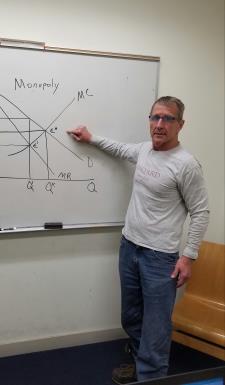
Lenny D. answered • 04/09/19
Former Tufts Economics Professor and Wall Street Economist
Partial equilibrium holds everything else constant and looks at a snap shot and can give a quick, down and dirty answer but it fails to look at the bigger picture. I'll give you an example. Consider a two good economy (X and Y) both exhibit constant returns to scale. X is capital intensive relative to Y (Kx/Lx>Ky/Ly) . Let good Y be the numeraire (the price of X is measured in how much Y must be given up to obatin one unit of X. If Preferences shift towards the consumption of X the partial equlibrium analysis woul show a shift in demand for X to the right increasing both the price and quantity consumed. We see nothing else. In the general equilibrium framework we see X production and consumption rise and Y production and consumption fall the returns to capital will rise and the returns to labor will fall. In percentage terms the returns to capital rise more than the price of x. As y is the numeraire it's price doesn't change and wages will fall.
Then general wqulibrium analysis gives us the whole picture.




